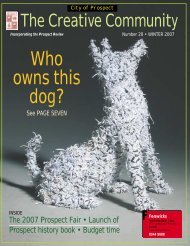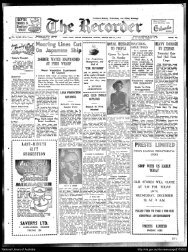Sample Prompts for the STAT Written English
Sample Prompts for the STAT Written English
Sample Prompts for the STAT Written English
You also want an ePaper? Increase the reach of your titles
YUMPU automatically turns print PDFs into web optimized ePapers that Google loves.
Questions 34 – 38<br />
UNIT 11<br />
It is ironical that a person who contributed so much to <strong>the</strong> cult of high technology should also<br />
have been instrumental in proposing <strong>the</strong> conservation of natural resources. However,<br />
Buckminster Fuller has managed both and, in doing so, invented one of <strong>the</strong> most potent<br />
images of modern ‘alternative’ utopia, <strong>the</strong> geodesic dome.<br />
Fuller designed several ideal cities of <strong>the</strong> megastructure class, but he also developed <strong>the</strong><br />
concept of ‘Spaceship Earth’ in which <strong>the</strong> world is seen as a limited entity, with limited<br />
energy income from <strong>the</strong> sun and limited ‘reserves’ in <strong>the</strong> energy bank. Thus he stresses that<br />
resources should be used with greater and greater efficiency, as in <strong>the</strong> case of ‘a one-tenth ton<br />
Telstar satellite outper<strong>for</strong>ming 75,000 tons of transatlantic cable’. Utopia would be possible<br />
only if technology provided more and more goods from fewer and fewer resources:<br />
It was impossible when people thought that <strong>the</strong>re was only enough <strong>for</strong> a minority<br />
to live in com<strong>for</strong>t. But utopia is now, <strong>for</strong> all or <strong>for</strong> none. Because invisible<br />
technology can do much more with less, utopia is, inherently, possible <strong>for</strong> <strong>the</strong> first time.<br />
Bodily needs must precede metaphysical contentment.<br />
During <strong>the</strong> 1960s, Fuller inaugurated <strong>the</strong> World Design Science Decade to stimulate <strong>the</strong><br />
achievement of this utopia, <strong>for</strong> he believed that <strong>the</strong> state of society was such that a utopia was<br />
necessary to ensure its survival:<br />
Let us . . . commit ourselves earnestly to <strong>the</strong> Design Science Decade approach to<br />
achieving utopia. This moment of realisation that it soon must be utopia or oblivion<br />
coincides exactly with <strong>the</strong> discovery by man that, <strong>for</strong> <strong>the</strong> first time in history, utopia is,<br />
at least, physically possible of human attainment.<br />
Most people believed that science and technology were far more important to utopia than<br />
mere social or political matters. Buckminster Fuller is emphatic in adding design to <strong>the</strong> list.<br />
‘There is only one revolution tolerable to all men, all societies and all systems,’ he wrote,<br />
‘Revolution by Design and Invention.’ However, it should not be surprising to find <strong>the</strong> designer<br />
occupying a role as utopian, <strong>for</strong> design is <strong>the</strong> necessary link between scientific <strong>the</strong>ory and a<br />
useable product. Moreover, a designer’s work inevitably involves speculations and assumptions<br />
about <strong>the</strong> future, however much it may be clo<strong>the</strong>d in professional jargon. Indeed, if progress is <strong>the</strong><br />
realisation of utopias, it is, to a considerable extent, designers who turn <strong>the</strong> technical utopias into<br />
working projects and programmes.<br />
The utopian assumptions of <strong>the</strong>se projects need close scrutiny and it should not be assumed<br />
that <strong>the</strong>y are <strong>for</strong> <strong>the</strong> good of all. For knowledge, scientific or o<strong>the</strong>rwise, may be a wonderful<br />
thing, but its use in utopia is rarely disinterested or beneficial to all, as is well illustrated by <strong>the</strong><br />
control and manipulation of knowledge in Plato’s republic. Just as in Plato’s time, competing<br />
concepts of utopia co-exist — <strong>the</strong> utopia of <strong>the</strong> stable state with <strong>the</strong> utopia of freedom and<br />
cooperation. To date, science and design have almost exclusively served <strong>the</strong> <strong>for</strong>mer, but, if it is,<br />
as Fuller claims, a matter of utopia or oblivion, <strong>the</strong>n it might be appropriate <strong>for</strong> science to change<br />
sides.<br />
17<br />
5<br />
10<br />
15<br />
20<br />
25<br />
30<br />
35











